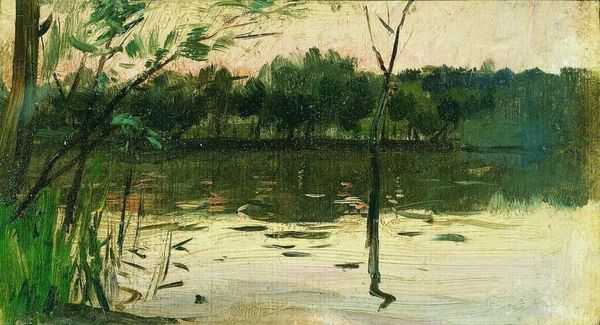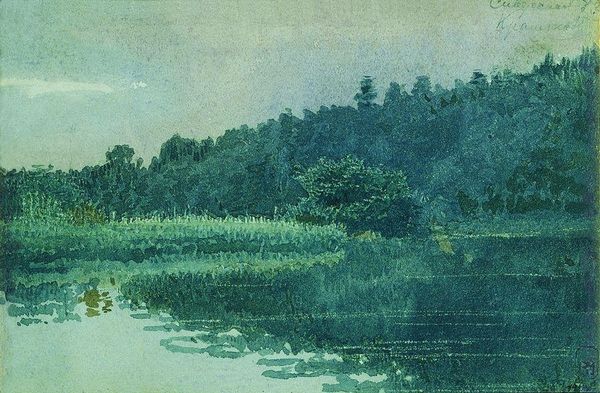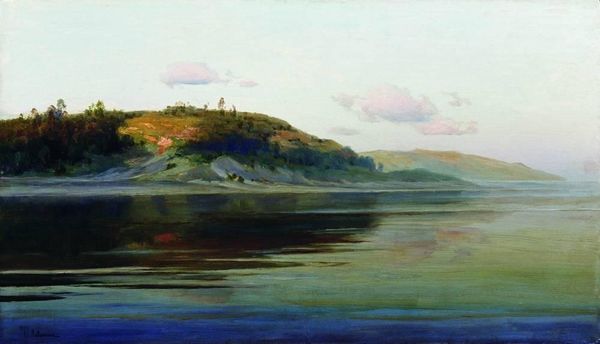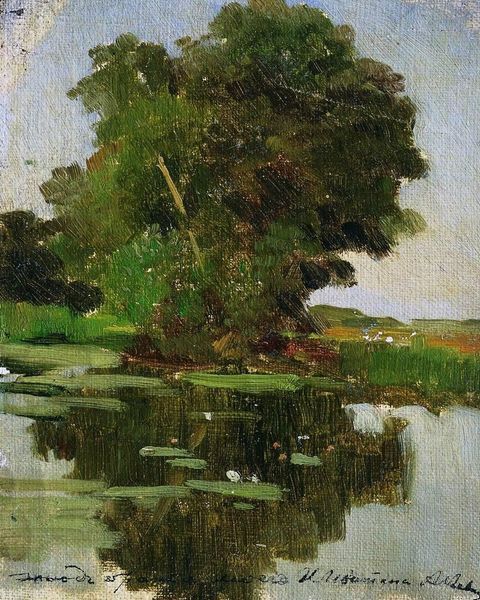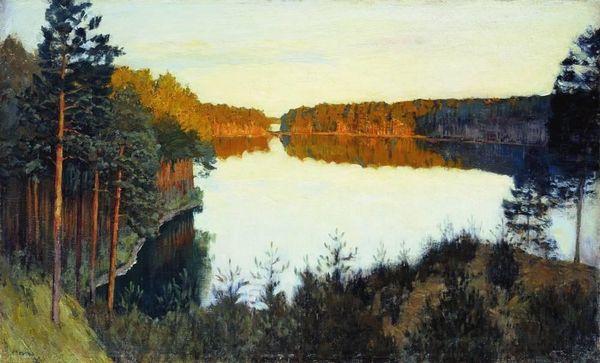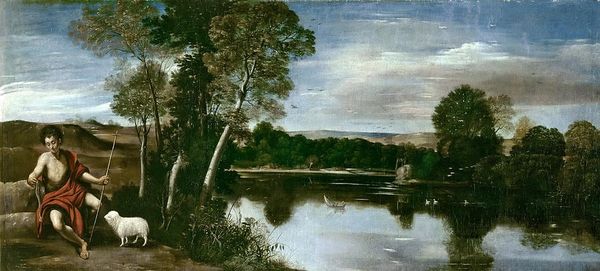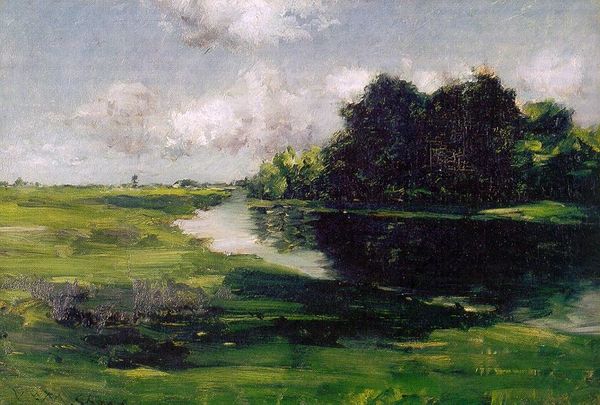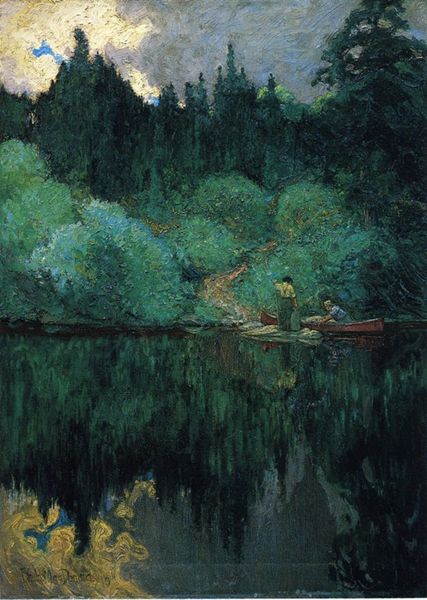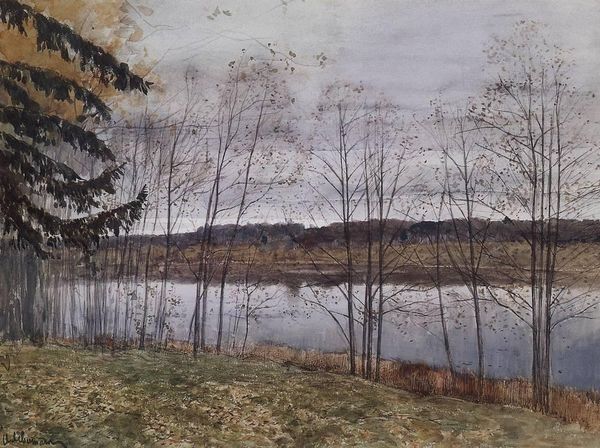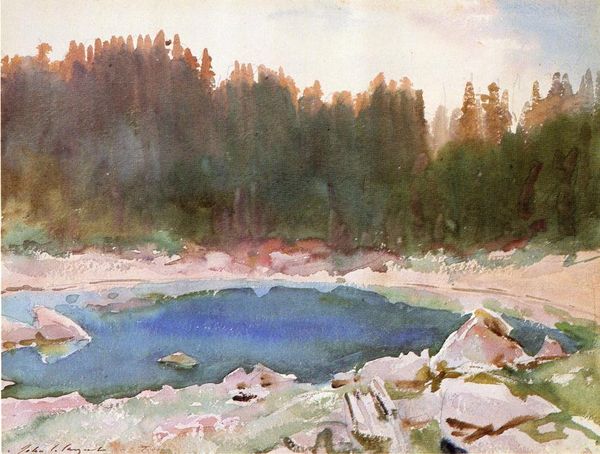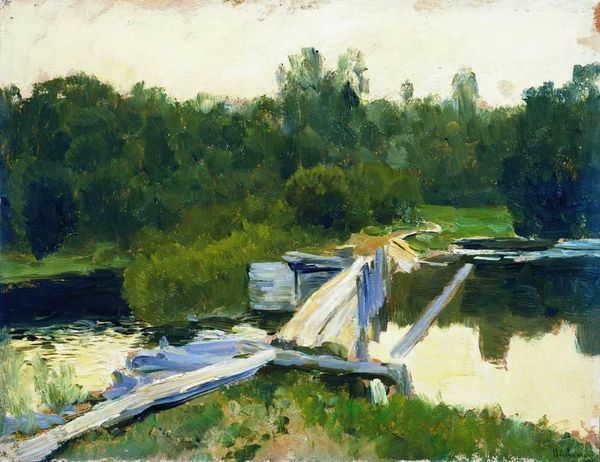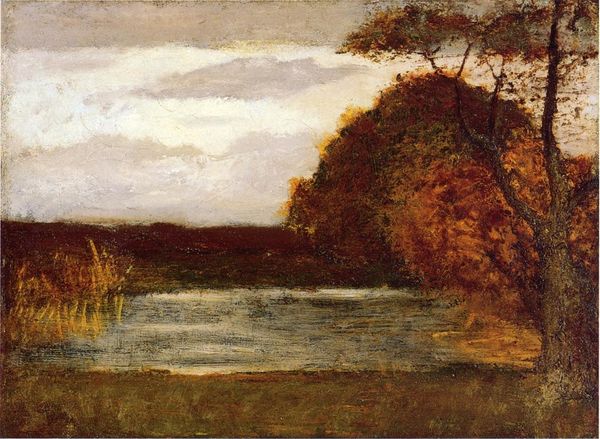
painting, oil-paint
#
painting
#
impressionism
#
oil-paint
#
landscape
#
river
#
impressionist landscape
#
oil painting
#
realism
Dimensions: 57.8 x 88.7 cm
Copyright: Public domain
Curator: What a remarkably serene piece. Its subdued tones create such a calming effect. Editor: Indeed. We are looking at Isaac Levitan’s “At Volga,” an oil painting from 1888 currently held in the Tretyakov Gallery in Moscow. Levitan, a key figure in Russian landscape painting, captured many scenes of the Volga River. What does this artwork tell us about Russian art at this moment in time? Curator: Levitan, though often categorized as an Impressionist, brought a distinctly Russian sensibility to his landscapes. While Impressionism was gaining momentum in Europe, here we see less interest in pure light effects, but rather a symbolic view of Russian nature and it's deep-rooted associations with the country’s soul. It aligns with the late 19th-century artistic movements that sought to portray a kind of collective identity, and reflect a profound emotional bond with nature. Editor: I'm fascinated by the use of such a limited color palette here – primarily greens and whites. The reflection of the forest on the still water gives the piece a remarkable sense of depth. Observe how the thick, almost gestural brushstrokes give the impression of movement even in what appears to be a placid scene. It really embodies this idea of landscape painting being the embodiment of raw and honest expression. Curator: Absolutely. The Volga wasn't merely a river; it represented Russia's lifeline, connecting diverse communities and economies. Levitan, in showing this particular view, is less concerned with the economic significance. His choice emphasizes its quiet, untouched, almost melancholic nature reflecting a national mood and artistic dialogue during a time of great change. What do you find most striking about the composition itself? Editor: For me, it is the simple division of space; The water takes up nearly half the canvas, forcing us to reflect. The soft blending and almost atmospheric rendering of space speaks of light, texture and mood. How interesting is that one small boat? What is it telling us? It feels more monumental given the context in Russia's complicated cultural, political and religious evolution at the time. Curator: Indeed, "At Volga" represents a turning point in Russian landscape painting, where visual representation started reflecting deeper feelings tied to identity, and nation. Editor: It's fascinating how the simplest of scenes can encapsulate such rich cultural and aesthetic dialogues. Thank you for drawing out these complexities for me.
Comments
No comments
Be the first to comment and join the conversation on the ultimate creative platform.

